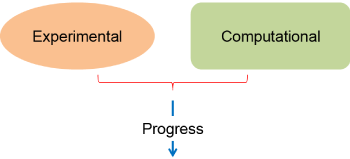Research
Our research is in the area of osteoarthritis, which is an aging-related disease in which cartilage deteriorates resulting in painful joints and decreased mobility. Our long term goal is to develop novel treatment strategies which utilize protein transduction and build upon developed knowledge involving chondrocyte mechanotransduction.
Our first research area, cellular mechanotransduction, is related to our objective to learn how cells respond to mechanical cues. Our second research area, synovial joint drug delivery, is tied to the objective of a bioactive intraarticular delivery platform. As shown in the diagram above, we expect that by conducting research in these two areas, we will reach both objectives and ultimately fullfil our long term goal of developing novel strategies for treating joint disease.
Synovial Joint Drug Delivery
One roadblock for treating degenerative joint disorders is very short joint residence times for most molecules upon injection into the joint. We are interested in using and modifying Protein Transduction Domains to improve the joint residence times of therapeutic cargo toward developing effective treatments for osteoarthritis and other joint disorders.
Cellular Mechanotransduction
All cells are subjected to mechanical loads from interactions with their environments (e.g. walking or gravity). Several studies have demonstrated that cells change their biological behavior in response to mechanical loading. We use chondrocytes (cartilage cells) as a model system and are interested in using a systems biology approach to understand how both chondrocytes and other cells respond to mechanical loading.
Approach
The foundation of our laboratory is well-controlled experimental data, but we also utilize computational methods in a hypothesis-driven manner.

Our long-term goal is to develop novel treatment strategies that use protein transduction and build upon what we know about how cartilage cells respond to mechanical loads caused by forces, such as gravity, and activities, such as walking.

